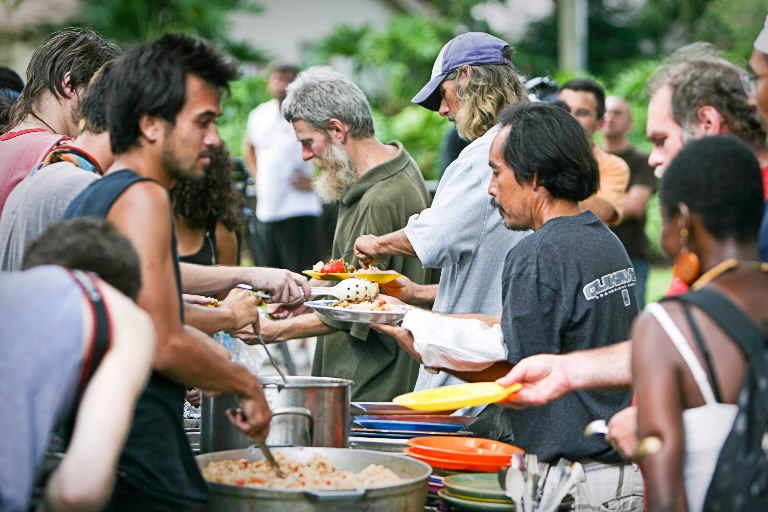SANTA MONICA—During the recent City Council meeting, the results of the January 24, 2018 Homeless Count were released showing a 4 percent increase in homelessness, or an increase of 36 individuals since 2017. This comes amidst a regional homeless crisis with 57,000 (2017 regional count numbers) living without permanent shelter countywide.
Homeless counts are mandated by the U.S. Department of Housing and Urban Development. To conduct the Count, over 250 community volunteers and City staff covered each street in Santa Monica – a total of 226 linear miles – to tally homeless individuals sleeping outdoors, as well as in cars, RVs, and tents. Homeless persons in shelters, jails and hospitals were also counted at each facility.
The Count is conducted overnight to better identify individuals sleeping in the City, and represents the number of people identified as experiencing homelessness on a single night. The Homeless Count is not a cumulative number of people who may experience homelessness throughout the year, nor does it fully represent the number of homeless people who may be present in Santa Monica during daytime hours, but sleep elsewhere.
According to a press release from the city of Santa Monica, top line number will be impacted by the outcomes of countywide results expected in late spring from the Los Angeles Homeless Services Authority (LAHSA).
-The 2018 point-in-time homeless count total is up 4% from 921 individuals in 2016 to 957.
-Within the street count, individuals sleeping in vehicles/encampments increased to 104 people, up from 92.
-The shelter and institution population is 311, a decrease from 340 (8.5%) in 2017. Shelter occupancy was close to 95 percent; however, results appear to indicate that some people assigned to beds did not utilize them on that night.
Daytime demographic surveys of a smaller subset of the homeless population indicated those coming into Santa Monica and from where:
-New to Santa Monica – 27 percent report being in Santa Monica for less than 1 month, down 2 percent from last year.
-Originate outside the City – 44 percent come to Santa Monica from other parts of Los Angeles County; 32 percent come from out of state.
-Transportation into Santa Monica – 52 percent reported taking the bus, 16 percent biked or walked, 13 percent took a car and 9 percent took the Expo Line.
“We are not backing down from the commitment we made in 2015 when we set homelessness as one of our top five areas of focus,” said Mayor Ted Winterer. “We have listened to residents through Community Conversations, we have new data to benchmark our efforts, and the investments we’re making are smart and nimble to meet the challenges of the changing realities of homelessness.”
The four percent increase comes after 2017’s 26 percent increase in Santa Monica and a 23 percent increase countywide. In 2016, voters passed Measure H and HHH – with housing and a broad net of services to expand the safety net for a diverse homeless population with varying needs. Here are some of the new efforts underway.
The Los Angeles County Board of Supervisors voted to move forward with four ordinances designed to increase the supply of affordable housing. The Los Angeles City Council created an initiative to create a minimum of 3,300 supportive housing units called the 222 Pledge. All 15 city council districts are expected to participate and some councilmembers have pledged a minimum of 222 supportive housing units in their districts.
The Santa Monica Fire Department will start a new unit out of Fire Station 2 that will be dedicated to low acuity calls for service, which involve homeless patients. Library pop-up service fairs have connected 83 homeless people to local and regional services. The Santa Monica Police Department is involved with homelessness with an increase in self-reported activity up 35 percent and new officers assigned to the Homeless Liaison Program team. A community and employee training will kick off providing tangible tips on how to interact and support homeless individuals.
Real-time data monitoring will continue through the city’s SaMoStat performance management program.
The Homeless Steering Committee is comprised of a diverse set of stakeholders—social service providers, businesses, nonprofits, health care providers, interested residents and community leaders—who are actively meeting to address needs across all concerned citizens. The first public meeting of the Committee was held on March 7 at Roosevelt Elementary. A community toolkit will provide practical information about who to call and how to comfortably interact with homeless neighbors.
“In my first month here, I’ve been moved by the passion across Santa Monica,” said Alisa Orduna, the City’s new Senior Advisor on Homelessness. “This energy will provide the momentum we need to support our homelessness neighbors while also playing a role in the regional effort to get people housed.”
For additional details visit www.smgov.net/homelessness.






